SUMMARY
This is AI generated summarization, which may have errors. For context, always refer to the full article.
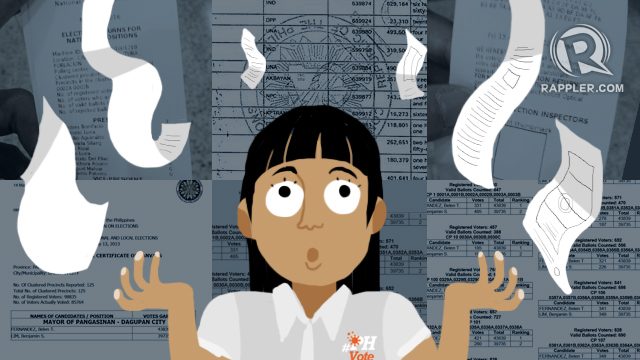
MANILA, Philippines – Part of poll watching during the 2016 elections is being familiar with the documents that will contain the election results in a precinct, town, city, and province.
All eyes would be on these papers, especially in many tight races at the national and local levels.
It is also important to know the other documents that will be in polling precincts on election day.
Here are some samples of such documents.
Election returns
After polls close at 5 pm on May 9, the Board of Election Inspectors (BEI) in each of the 92,509 clustered precincts nationwide will begin generating reports.
One of these reports is called an election return (ER). It contains the vote counts in national and local contests in a particular precinct.
These ERs are printed by the vote-counting machines (VCM), which will also transmit it electronically to the 3 servers in the automated election system (AES): the Comelec central server, the Transparency Server, and the servers at the city/municipal board of canvassers (BOC).
See a sample of an election return below, generated during one of the VCM demonstrations of the Comelec.
What an Election Return looks like #PHVoteWatch #TheLeaderIWant #PHVote @rapplerdotcom @MovePH pic.twitter.com/1ENLxtM3bg
— Gemma B. Mendoza (@gemmabmendoza) April 15, 2016
Besides the results in particular precincts, the ERs shall also reflect the ID of the VCM, details about the polling precinct, the number of registered voters and voters who actually voted, and the date and time when the report was generated.
The VCM will print 30 copies of ERs for the national race and 30 copies for the local race. These will be given to the board of canvassers, the Comelec, Congress (in the case of national elections), citizens’ arms and groups, and media entities. One of these copies shall be posted conspicuously within the polling place.
The thumbmark and signature of the BEI members shall be affixed on every copy of the election returns.
Certificate of Canvass (COC)
Once all ERs in a city/municipality have been received, the Board of Canvassers will prepare a report called the Certificate of Canvass.
The COC at this level contains the number of votes garnered by candidates in all contests in the city or municipality.
It also contains details such as the timestamp when the report was generated, the total number of clustered precincts that reported, the number of registered voters and the number of those who actually voted.
The hash code of the COC generated by the Consolidation and Canvassing System (CCS) shall also appear on the bottom of each page of every COC.
Here is a sample of a COC for one local race in 2013.
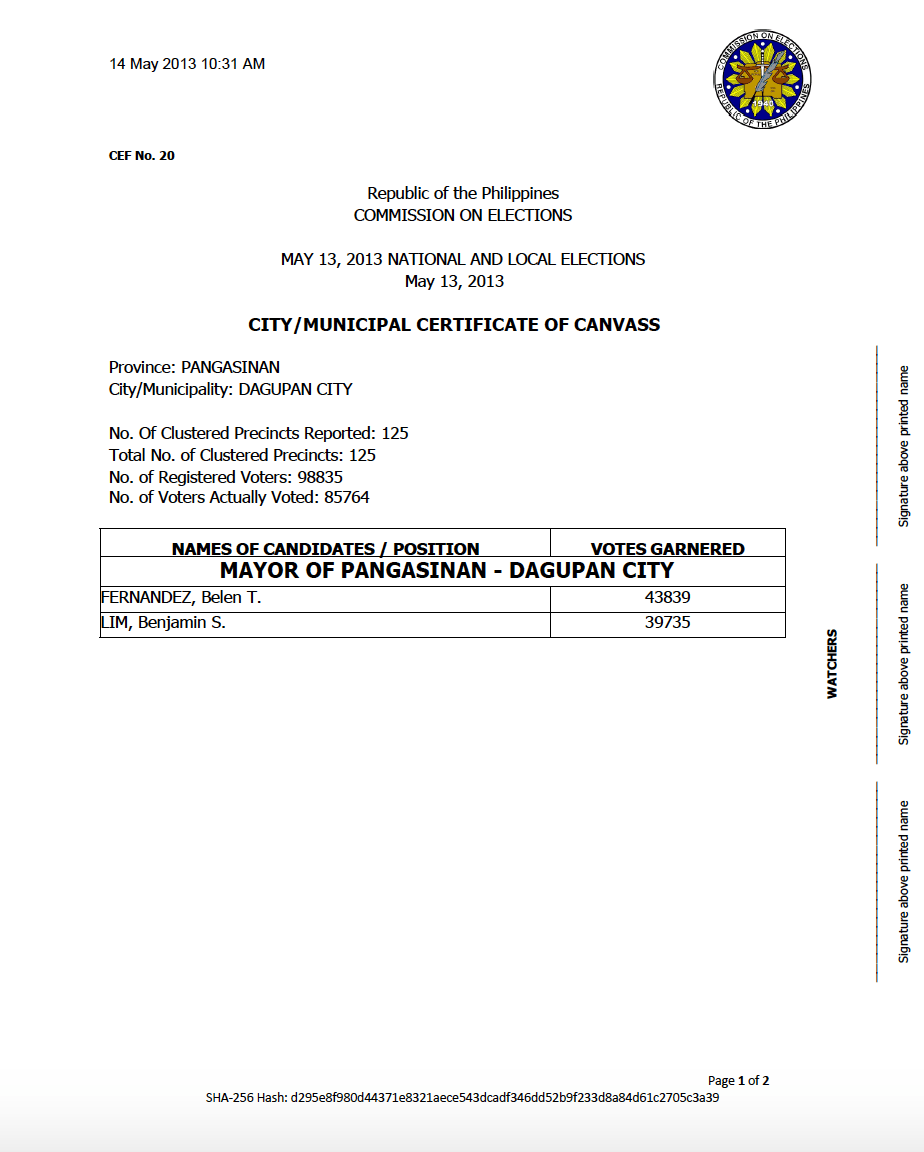
Poll watchers shall sign each page of the COC. Members of the BOC would then affix their signature and thumbmarks at the end of the COC.
Certificates of Canvass will also be generated at the provincial level (consolidating all city/municipal COCs in the province), and at one district level (for Taguig-Pateros).
At the national canvass, the COC will look different, but it should still have the essential information such as the timestamp, number of voters, hash codes, and the required signatures and thumbprints of the national board of canvassers.
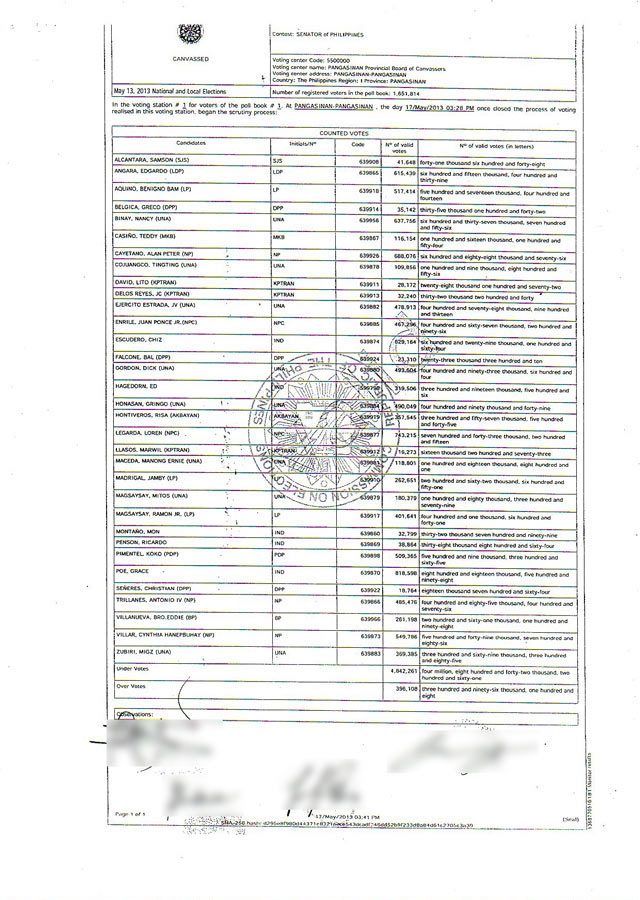
Statement of Votes (SOV)
The SOV is another report produced by the CCS at the canvassing stage.
Unlike the COC, however, the SOV provides the breakdown of votes per national or local contest, as received by the CCS. It still contains the same details like the number of registered voters and the hash code of the report.
The signatures of watchers, and the signatures and thumbmarks of the BOC members remain required at the end of the SOV.
In 2013, there were at least two versions of the SOV: Statement of Votes by Precinct (SOVP) and Statement of Votes by City/Municipality.
Samples of both SOVs obtained by Rappler after the 2013 polls can be seen below.
Statement of Votes by Precinct
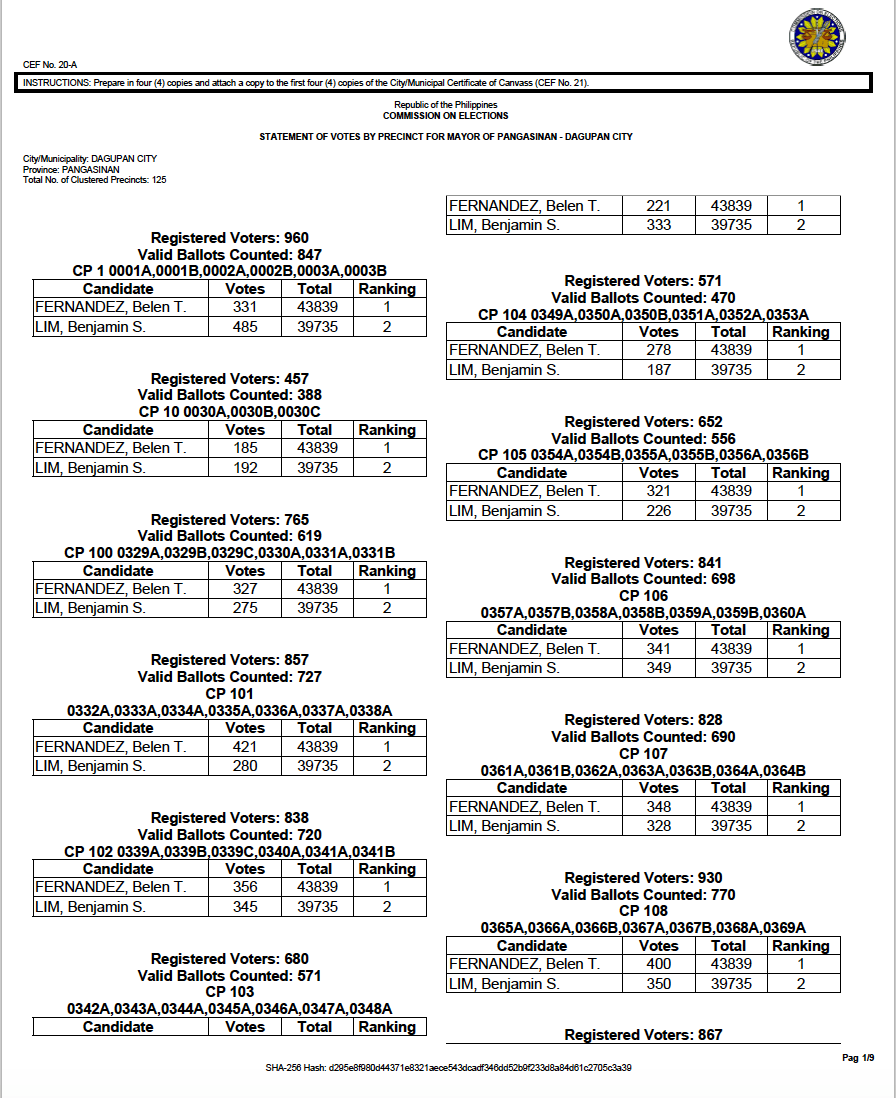
Statement of Votes by City/Municipality
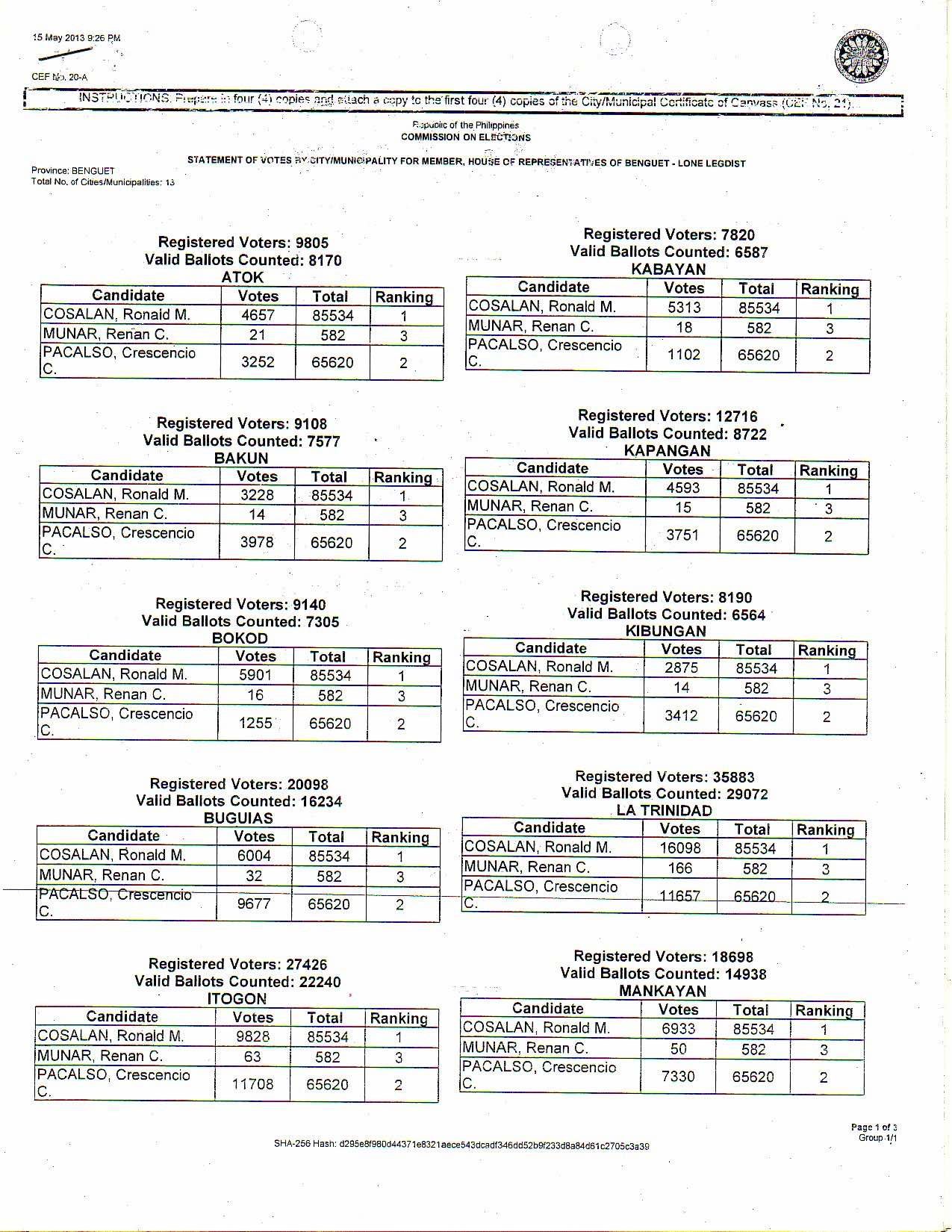
Voters’ lists
Besides documents containing election results, poll watchers should also know about the voters’ lists in polling precincts.
Two copies of the Precinct Computerized Voters List (PCVL) will be given by the local Comelec election officer to the BEIs on election day. One copy will be posted outside the clustered precinct, so that voters can search for their names.
It contains the names and addresses of voters in a particular precinct.
A second list, the Election Day Computerized Voters List (EDCVL), will also be given to the BEIs on the morning of May 9. This will be found inside the polling place, on the BEI’s table.
The EDCVL contains the voters’ names and photographs. After voting, the voters will affix their signature and thumbmark on the EDCVL.
Here are screengrabs showing portions of these voters’ lists from Rappler’s #PHVote 101 story on how to vote on election day.
Precinct Computerized Voters List

Election Day Computerized Voters List

Voter’s receipt
After the voter feeds his or her ballot into the vote-counting machine, the VCM prints out a voter’s receipt, which will reflect the voter’s choices as scanned and counted by the VCM.
Officially called the voter verified paper audit trail (VVPAT), the voter’s receipt shall be surrendered to the BEIs and kept in a separate receptacle box on the BEI’s table.
The voter cannot bring out of the polling precinct or take home the voter’s receipt.
Here is another screengrab from Rappler’s #PHVote 101 story, showing a sample of a voter’s receipt.
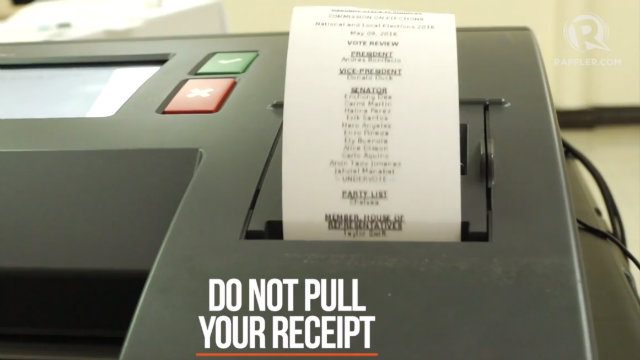
– Rappler.com
Add a comment
How does this make you feel?
There are no comments yet. Add your comment to start the conversation.